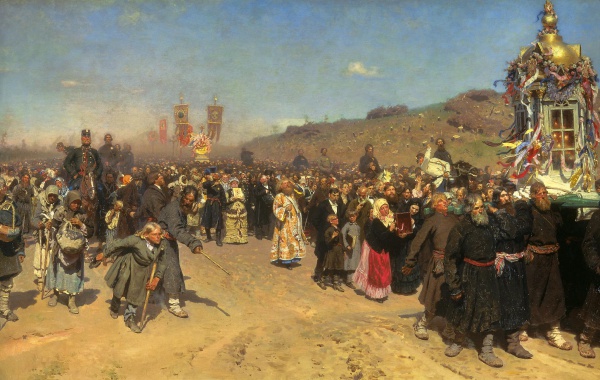Facts About Religious Procession in Kursk Governorate
"Religious Procession in Kursk Governorate" is an outstanding oil painting by Russian realist artist Ilya Repin, created between 1880 and 1883. This captivating piece portrays a vibrant crowd participating in the annual religious procession, carrying the renowned icon Our Lady of Kursk from Korennaya Monastery to the city of Kursk in western Russia. Leading the procession are Orthodox priests bearing icons and banners, followed by a diverse group of people—peasants, officials, and members of the elite.
Upon its initial exhibition, Repin's painting ignited controversy, particularly due to the portrayal of a seemingly inebriated man holding the icon. This daring choice served as a social commentary, critiquing perceived abuses by both the church and the state. Repin aimed to capture the essence of the society around him, utilizing his art to convey his observations and ideas.
The meticulously detailed painting features various elements: peasants carrying the icon, officials maintaining order, and a blend of characters from different social classes. The scene depicts a collective movement toward Korennaya, symbolizing unity amidst the diversity of Russian society.
Despite its popularity, the painting faced criticism for what some perceived as hostility toward the established social order. While some praised its balanced depiction, others noted its portrayal of societal tensions and disparities. The artwork was eventually acquired by collector Pavel Tretyakov for a significant sum and remains a prominent piece in the Tretyakov Gallery in Moscow.
"Religious Procession in Kursk Governorate" continues to be a powerful representation of Repin's artistic style and his commitment to reflecting the complexities of Russian society through his work.

 Belarus
Belarus